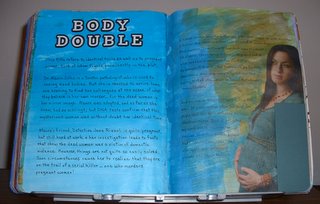
This was a fairly predictable tale of bioterrorism. A deadly virus is stolen from a lab in the wee hours between Christmas Eve and Christmas Day. The whole story takes place in those few hours, with the characters rotating between the lab and Stanley Oxenford's home. His children and grandchildren are visiting for the holidays, and we soon learn that reprobate son Kit is out to ruin his father, while saving himself from a huge gambling debt. Toni Gallo, as the lab's security chief, is the heroine.
My introduction to Ken Follett was his book "Eye of the Needle", which I read in 1979. I remember that I was absolutely mesmerized. I suppose my tastes have changed over the years, or his writing has gotten a bit more bland. At any rate, I read the first chapter or so of this one, and lost patience with it. After returning it to the library, I saw an audio copy and decided to give that a go. When I'm stuck in the car, I love to listen to books on CDs, and I don't mind ones that I wouldn't waste time reading. When I read a book, I want to love the language...to appreciate the author's way with words...to take my time savoring the mind pictures...to copy passages and look up definitions of unfamiliar words. However, about the only things I require from an audio book are an interesting storyline and an able reader. This CD passed muster where the bound version did not. The story wasn't one of Follett's best as I remember them, but the howling wind at the beginning and end of each disk set the mood, as did the reader's varied Scottish accents.
For the background of these pages I used Apple Barrel's "Blue Stoneware" acrylic paint, overbrushed with Americana "Titanium White." The title was written with a Zig embossing brush, covered with white embossing powder and heated til it melted. To focus the eye and tie the magazine photo to the previous page, I stamped and heat-embossed a few snowflakes.

